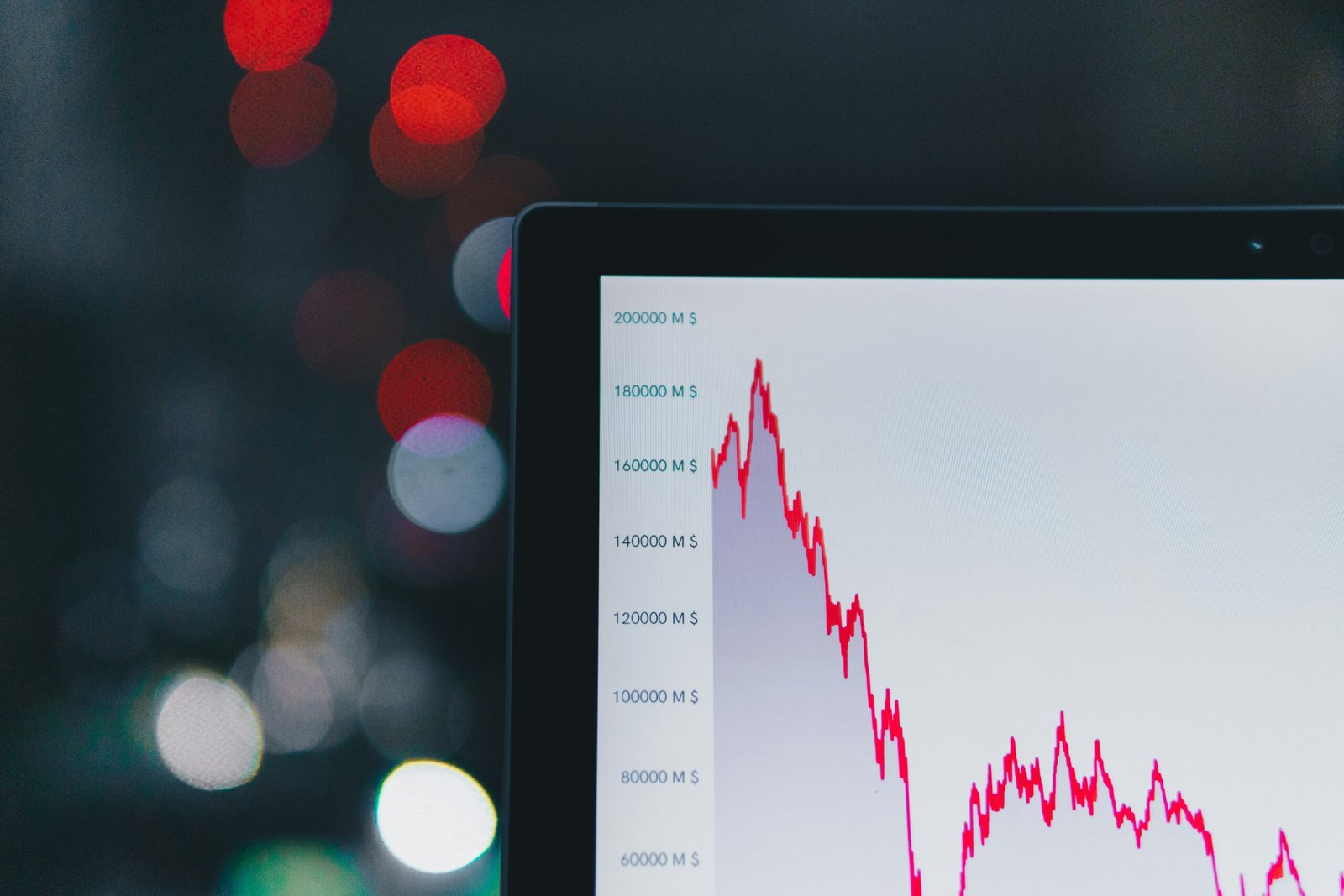Understanding Decentralized Finance: A New Era for Investors
What is Decentralized Finance (DeFi)?
Decentralized Finance, or DeFi, is a financial system that operates on decentralized networks and primarily utilizes blockchain technology. Thus, DeFi differs from the traditional finance model. The traditional model is central to the banking institution system. DeFi uses smart contracts and peer-to-peer protocols. These create an environment for more direct transactions between individuals. This approach promotes transparent, accessible, and efficient financial services.
DeFi Explained: Revolutionizing Finance with Blockchain and Minimal Intermediaries
At its core, DeFi consolidates financial applications beyond traditional banking. It includes lending and borrowing platforms, decentralized exchanges, yield farming, and stablecoins. These components allow users to trade, save, and invest with minimal need for intermediaries. The use of blockchain assures that all transactions are secure. They are also traceable and immutable. This reduces the scope for fraud and manipulation.
Smart Contracts and Tokens: The Backbone of DeFi Innovation
Smart contracts form the core structure of DeFi innovation. They are especially vital when they are self-executing contracts. The terms of an agreement are directly written into code. Such contracts automatically enforce and execute agreements once the predefined conditions are met. Therefore, they eliminate the need for third-party verification. The tokens represent the currency for the DeFi ecosystem. Different protocols have their tokens to promote transactions and encourage users.
It is paramount to familiarize oneself with the key terms when one is new to the decentralized finance world. Some of these essential terms include liquidity pools, impermanent loss, and governance tokens, among others. This knowledge would decode the play on DeFi platforms. It would start to enable more users to find a place in an inclusive and innovative system.
Earning Passive Income through DeFi Platforms
Decentralized Finance (DeFi) is quite an innovative strategy for passive income generation. It is being considered as one of the most important alternatives to traditional financial systems. Some of the most used strategies are yield farming, liquidity mining, and staking. Each of these provides specific opportunities with various risk-return profiles.
Yield Farming: Maximizing Returns Through Cryptocurrency Lending and Staking
Yield farming simply refers to lending or staking a cryptocurrency with interest to be earned in the form of rewards. In a simpler expression, this usually translates to “yearly percentage yields”. Users can exploit their chance of getting maximum returns by choosing protocols with the highest yields. For instance, users who lend to AMM receive fees from trading action. This is why this activity can be quite lucrative through yield farming. Users can use platforms such as Compound or Aave to lock away their cryptocurrency. They can then earn interest on it. This interest may be much higher than a regular savings account.
Liquidity Mining: Earning Tokens and Supporting DeFi Growth
Liquidity mining is another form of users’ earning tokens through the provision of liquidity to specific DeFi projects. In this case, participants lend funds to liquidity pools. They are then rewarded with governance tokens. These tokens subsequently appreciate over time. An example would be Uniswap. In this platform, liquidity providers share part of each transaction fee. This means liquidity mining goes further than just being a passive income stream. It also comes with gaining exposure to burgeoning projects in the DeFi space.
Staking: Earning Passive Income by Supporting DeFi Networks
The third way of generating passive income is through staking. Staking is when users lock their money to support the functioning of the network. They do this by validating transactions or securing the network. Investors will earn rewards in terms of new tokens in the form of earning while using platforms like Ethereum 2.0 or Cardano. Staking is relatively simple. Investors can earn while still retaining ownership of the underlying assets.
In a nutshell, passive income from several DeFi platforms seems more beneficial. It surpasses holding one’s money in a traditional savings account or investment vehicle. The available returns, along with ease of accessibility, make DeFi appealing to investors. Its flexibility adds to its attractiveness for those seeking income diversification. Success in these approaches might unlock financial opportunities for everyone globally. The evolving DeFi ecosystem continues to grow.
Navigating the Risks and Rewards of DeFi Investments
DeFi is very different from other landscapes of investment, where intense opportunities lead to huge risks. The novelty of DeFi has attracted investors. They see this as an opportunity to exploit the potential for high returns through such projects. With blockchain technology and smart contracts, the middleman in the process is eliminated; thus, financial services are democratized. This makes it accessible to a considerable profit potential as an investor can easily lend, borrow, and even yield farm.

However, with all these benefits, there are several inherent risks that DeFi investors must sail through. The first and most salient threat is volatility. The prices of cryptocurrencies can in a short space change erratically and create a very precarious environment for the investor. Furthermore, most DeFi projects operate in a nascent market. This market evolves quickly. It is well exposed to tendencies and changes in investor sentiment.
DeFi Risks: Security Vulnerabilities and Regulatory Uncertainty
Security vulnerabilities form another major risk. Although powerful in their abilities, smart contracts at times develop bugs and exploits. Hacking in some DeFi protocols has led to lost funds and loss of trust in the whole system. Thus, proper examination into each platform’s security measure is of the essence before anyone can invest. Moreover, the regulatory environment regarding DeFi is still unclear in most countries. Regulation changes may affect the viability of any project. They may also impact the safety of investments.
An investor wishing to take DeFi projects seriously and mitigate risks would need to have a disciplined approach towards it. This approach requires rigorous due diligence on the teams involved. It also involves a comprehensive analysis of the teams, the roadmap, and the tokonomas. An alternative avenue that may also minimize risk exposure would be the diversification of investments across multiple platforms. Last but not least, understanding both the risks and rewards of DeFi empowers investors. They gain critical decision-making authority in such a dynamic environment.
Choosing the Best DeFi Protocols for Your Investment Strategy
If the investors enter the world of decentralized finance, they should understand it demands rigorous research. They need to select protocols suitable for their goals. This area has seen landscapes pick up speed exponentially. A wide range of services is offered on several platforms. Therefore, there are quite a few key considerations that must be taken before reaching any conclusion.
Building Trust in DeFi: Reputation, Transparency, and Community Engagement
The first and foremost aspect is reputation. A security sense: DeFi protocols with a good reputation are closer to security. Transparency about how they work is also essential. The development team’s previous work builds a feeling of reliability for the protocol. Their history and previous projects also contribute. Community feedback gives additional assurance. Engaging with community forums can offer valuable insights. Participating in social media and dedicated groups also provides an understanding of the experiences of other investors and users.
Yet another factor that cannot be ignored when talking about DeFi is its security features. Protocols are mostly prone to hacking. They have vulnerable points. A proper audit by leading firms also highlights the focus on protecting users’ funds within a project. One should learn about risk mitigation, such as insurance options or collateralization mechanisms the protocol may be providing.
Yield Rates in DeFi: Understanding Risks and Comparing with Traditional Finance
Yield rates are another significant factor for selection among the DeFi protocols. The platforms might differ in yields since each one has its financial model. Therefore, one should understand how these yield rates are created. It is important to recognize the kind of risk that comes with them. Finally, comparing with traditional finance options provides insights. It helps determine if investing in DeFi might avoid some pitfalls usually experienced in financial systems.
In short, choosing the best DeFi protocols requires scrutiny. Consider its reputation and community backing. Evaluate the security implemented and the yield rates. This way, investors will be able to successfully integrate DeFi into their general financial plan. They will then make corresponding prudent decisions regarding investments that match their goal.







